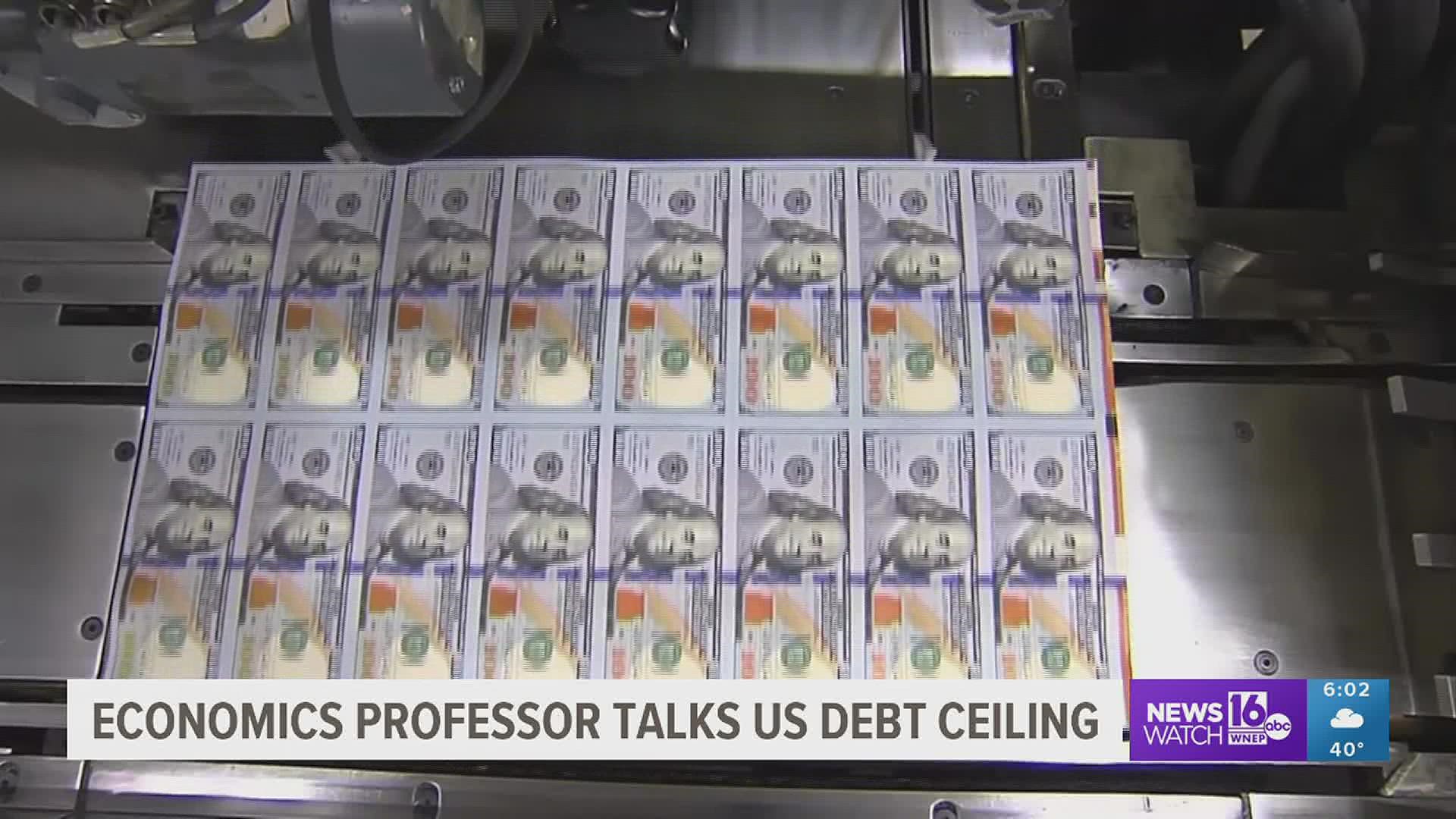LYCOMING COUNTY, Pa. — This week, the United States reached its debt limit of $31.4 trillion, leaving the government scrambling for a way to pay the bills.
Newswatch 16 sat down with an associate professor at Lycoming College who specializes in economics to explain what this all means.
"It is a legal limit set by the government that is passed by the House of Representatives, Senate, and signed by the president that limits the amount of money the U.S. government can borrow in treasury bonds," Philip Sprunger explained.
The debt limit was last raised in December of 2021. The three branches of government will most likely have to agree on a deal to raise the debt limit. However, House Republicans have said the limit won't be raised again until President Biden agrees to heavy cuts in federal spending, something the president says he will not negotiate. This could cause an economic shock.
"There is usually a game of chicken, a standoff at the end. Ultimately, the government would also have to probably quit repaying some of its bonds, which is called a default, and it is something markets don't like to see. It could create market turmoil," Sprunger said.
Now, Treasury Secretary Janet Yellen is tasked with pulling money to fund government spending.
"She will move around pension funds, health care reserve funds, and other banking funds, and the government will be able to pay its bills till about June," the professor said.
If a deal is not struck by June, we could see a government shutdown.
"Furlough non-essential workers, quit paying essential workers, and so on, to be able to live in the current tax revenue," added Sprunger.
Increasing the debt limit is nothing new. Under both President Trump and President Obama, the limit was increased by nearly $8 trillion during both presidencies.

